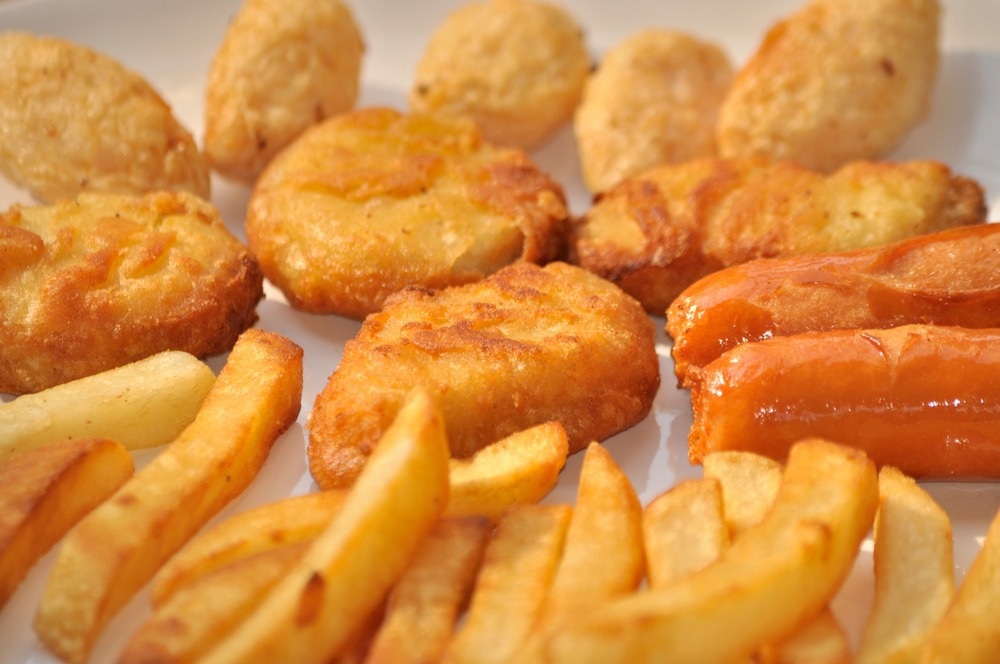Cancer and neoplasms
What to Know About Processed and Ultra-Processed Foods
Defining processed and ultra-processed foods
Dispelling the myth around processed foods
Nutritional content and impact
Understanding food labels
The role of processed and ultra-processed foods in modern diets
Conclusion
References
Further reading
Dietary choices significantly impact global health, contributing to approximately 11 million deaths through conditions like diabetes, cancer, and cardiovascular diseases.
Image Credit: Phairoh chimmi/Shutterstock.com
The American Institute for Cancer Research emphasizes the potential reduction of neoplasms, or abnormal tissue growths, by altering lifestyle and dietary choices in developing nations.
Over the last decade, there has been an increase in the consumption of processed and ultra-processed foods worldwide. This escalation underscores the critical need to investigate and raise awareness of the effects of these foods on overall health.
Defining processed and ultra-processed foods
Food processing encompasses techniques that modify raw foods for storage and consumption convenience. In contemporary classifications, food falls into four categories proposed by the NOVA method: unprocessed, processed culinary ingredients, processed foods, and ultra-processed foods (UPFs).
The U.S. Department of Agriculture defines “processed food” as any altered fruit, vegetable, or food item, including cleaning, dehydrating, heating, juicing, or freezing, apart from raw agricultural produce.
Examples include tofu (from raw soybeans), dry roasted almonds (from raw almonds), and canned vegetables (e.g., tomatoes, carrots).
Ultra-processed foods, in contrast, undergo further processing and include additional ingredients like fats, salt, sugar, preservatives, artificial colors, and flavors, such as processed meats, sugary beverages, packaged sweets, snacks, instant soups, and frozen meals.
Dispelling the myth around processed foods
There is a common misconception that all processed foods lack nutritional value and are harmful. However, some processing methods can enhance or preserve food items, such as enriching food with necessary nutrients like iron, vitamins, and iodine to prevent deficiencies.
Moreover, processing techniques like cooking, drying, and pasteurization can prevent harmful bacterial growth, extend shelf life, and improve taste and texture, making meal preparation more convenient.
Nutritional content and impact
Research shows UPFs have poor dietary and nutritional value, contributing to severe conditions like obesity. These foods are typically high in energy, refined carbohydrates, unhealthy fats, and sugar but low in fiber, proteins, minerals, and vitamins.
Various studies have linked the consumption of UPFs to increased risks of obesity, abdominal obesity, metabolic syndromes, hypertension, high blood pressure, type 2 diabetes, cardiovascular diseases, cancer, and depression. These health risks are associated with poor nutritional content and high glycemic levels in UPFs.
Understanding food labels
Identifying processed and ultra-processed foods solely from food labels can be challenging, as specific processing techniques are often not disclosed. However, understanding some basic concepts of food development and processing can help.
For example, fresh fruits and vegetables are not processed or ultra-processed, while culinary ingredients like plant-based oils, sugars, and salts fall into the minimally processed group. Additionally, the number of ingredients listed on a food product can indicate its level of processing.
Cosmetic additives listed at the end of the ingredients list, such as flavor enhancers, sweeteners, thickeners, carbonating, and glazing agents, can aid in identifying ultra-processed foods. In some cases, food products may label ingredients as natural or artificial flavors, simplifying the identification process.
The role of processed and ultra-processed foods in modern diets
The demand for convenience has led to a significant increase in the consumption of ultra-processed foods, making them a prominent component of modern diets. These energy-dense foods often contain high levels of unsaturated fats, added sugars, and salts. Clever marketing strategies, including the use of popular characters, endorsements, and giveaways, heavily influence dietary choices, especially among children.
Conclusion
In conclusion, it is crucial to differentiate between processed and ultra-processed foods. While processed foods can be consumed safely, the association between UPFs and adverse health outcomes cannot be overstated. Encouraging the consumption of enriched food items rich in proteins, vitamins, and minerals over low-quality UPFs is essential for promoting better health.
References
- Processed vs. Ultra-Processed Foods: Which are Okay? [Online] Dr. William Li. Available at: https://drwilliamli.com/processed-vs-ultra-processed-foods-which-are-okay/
- What are Processed and Ultra-Processed Foods? [Online] Canadian digestive health foundation. Available at: https://cdhf.ca/en/what-are-processed-and-ultra-processed-foods/
- Crimarco, A., Landry, M. J., & Gardner, C. D. (2022). Ultra-processed Foods, Weight Gain, and Co-morbidity Risk. Current obesity reports, 11(3), 80–92. https://doi.org/10.1007/s13679-021-00460-y
- Saavedra-Garcia, L., Taboada-Ramirez, X., Hernández-Vásquez, A., & Diez-Canseco, F. (2022). Marketing techniques, health, and nutritional claims on processed foods and beverages before and after the implementation of mandatory front-of-package warning labels in Peru. Frontiers in nutrition, 9, 1004106. https://doi.org/10.3389/fnut.2022.1004106
- De Amicis, R., Mambrini, S. P., Pellizzari, M., Foppiani, A., Bertoli, S., Battezzati, A., & Leone, A. (2022). Ultra-processed foods and obesity and adiposity parameters among children and adolescents: a systematic review. European journal of nutrition, 61(5), 2297–2311. https://doi.org/10.1007/s00394-022-02873-4
- Elizabeth, L., Machado, P., Zinöcker, M., Baker, P., & Lawrence, M. (2020). Ultra-Processed Foods and Health Outcomes: A Narrative Review. Nutrients, 12(7), 1955. https://doi.org/10.3390/nu12071955
- Monteiro, C. A., Cannon, G., Levy, R. B., Moubarac, J. C., Louzada, M. L., Rauber, F., Khandpur, N., Cediel, G., Neri, D., Martinez-Steele, E., Baraldi, L. G., & Jaime, P. C. (2019). Ultra-processed foods: what they are and how to identify them. Public health nutrition, 22(5), 936–941. https://doi.org/10.1017/S1368980018003762
- Fiolet, T., Srour, B., Sellem, L., Kesse-Guyot, E., Allès, B., Méjean, C., Deschasaux, M., Fassier, P., Latino-Martel, P., Beslay, M., Hercberg, S., Lavalette, C., Monteiro, C. A., Julia, C., & Touvier, M. (2018). Consumption of ultra-processed foods and cancer risk: results from NutriNet-Santé prospective cohort. BMJ (Clinical research ed.), 360, k322. https://doi.org/10.1136/bmj.k322

